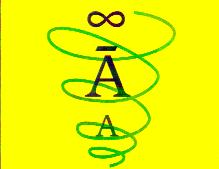"How can
we examine and make our unconscious premises (assumptions)
conscious?"
(We started with
a little relaxation led by Jeanne and Robert)
Now to business
.. Discssion:
What is your interpretation
of the P1-T1 diagram?
Do you ever get
the feeling that you are doing something that doesn't work
for you, but are not sure why you persist in this behaviour?
Can you think of an example?
Have you any idea
where that behaviour could have originated?
Can you think of
a behaviour that may stem from preverbal or early childhood,
that you feel for the most part, is a positive or useful behaviour?
Think of an example, and where it may have originated?
How do we effectively
apply the P1-T1 concepts in our everyday lives?
Think of three
things that you may do regularlyto help you be more aware
of pemises that are not working well for you?
What do you think
of the differences between Korzybski's P1-T1 Diagram and:
a. the RET version,
and
b. the NLP version?
Do you think that
they build on each other - how?
If you cannot recall
where you originally came up with these premises, theories
or beliefs, it can be harder to effectively use the theiry
behind Korzybski's P1-T1 Diagram to effectively challenge
the resultant behaviours and move them permanently to P2s
and B2s.

